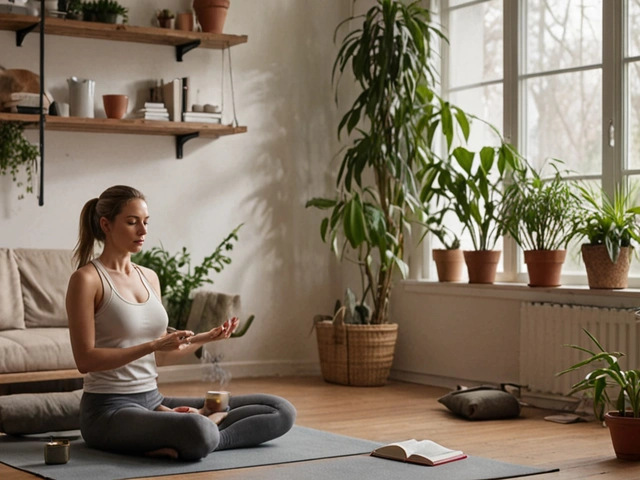Mindlessness: how to notice it and take it back
You can go through whole mornings on autopilot—phone in hand, coffee down, dog walked without really seeing them. That’s mindlessness: your body moves while your brain is elsewhere. It drains energy, raises stress, and makes you miss simple chances to feel better or respond to your pet’s needs.
Mindlessness shows up as repeated mistakes, numb eating, zoning out in conversations, or never finishing tasks. It also makes it harder to read your dog’s signals—missed limps, early anxiety signs, or a wag that needs a reply. Spotting it is the first real step toward change.
Practical habits to break mindlessness
Do a three-breath check before you switch tasks. That’s it: inhale, pause, exhale. It resets your focus and lowers tension in under 20 seconds.
Single-task for 25 minutes (Pomodoro). Close tabs, silence notifications, and focus on one thing. You’ll finish more and feel less scattered.
Use sensory anchors. Name five things you see, four you can touch, three you hear. This 60-second trick snaps you back to the present faster than scrolling does.
Make simple phone rules: no screens during meals or walks. Test it—eat one meal without your phone and notice the taste and digestion changes.
Turn routine chores into short practices. While brushing your teeth, notice the taste, the motion, and your breathing. These tiny moments add up.
Tools and practices that actually help
Try a short daily body scan: 3–5 minutes lying down or sitting. Move attention slowly from toes to head and notice tension or warmth. It trains you to feel your body and reduces automatic reactivity.
Use biofeedback apps or simple HRV (heart-rate variability) tools if you want data-based feedback. Seeing your breathing and heart patterns in real time makes calmness concrete and repeatable.
Meditation works but keep it short. Start with two to five minutes. Consistency beats marathon sessions; five minutes every day builds a real habit.
Bring mindfulness into dog time. On walks, name two smells, one texture underfoot, and one sound. Your dog gets your attention and you both calm down.
Massage and bodywork help you feel present in your body. A short self-massage or a professional session reconnects sensation and awareness, which reduces mechanical, distracted living.
Pick one habit and do it for two weeks. Track progress with a simple note. Small, repeated wins flip autopilot into choice.
If you’re skeptical, experiment: try a screen-free dinner or a two-minute breath check before bed for one week. Notice sleep quality, mood, and how your dog responds when you’re actually there. These are simple tests that tell you if mindlessness is stealing more than you thought.

Mindfulness vs. Mindlessness: Understanding the Impact on Mental Health
Hello everyone! In today's post, we're going to delve into the fascinating world of mindfulness and mindlessness, and how they affect our mental health. We'll be exploring the differing impacts of these two mental states, and how they can profoundly shift the landscape of our wellbeing. So, get comfy and join me as we take this enlightening journey together. It's time to discover more about ourselves and the power of our minds!

Stress Reduction: Transform Your Life Today
Dec, 5 2023

Healthy Diet Essentials for a Vibrant Life
Sep, 26 2025


